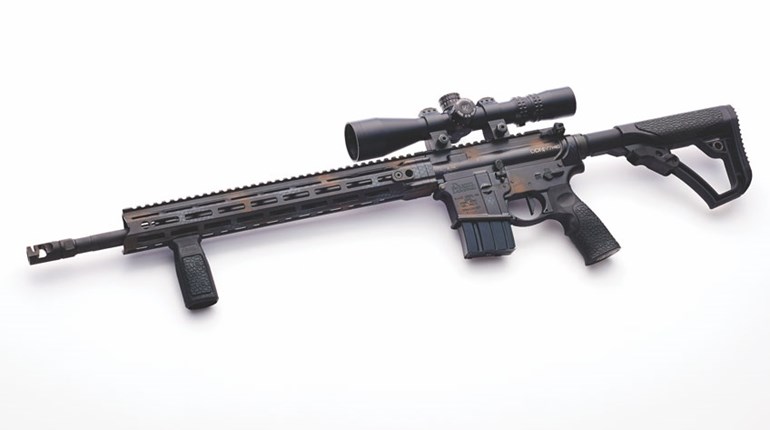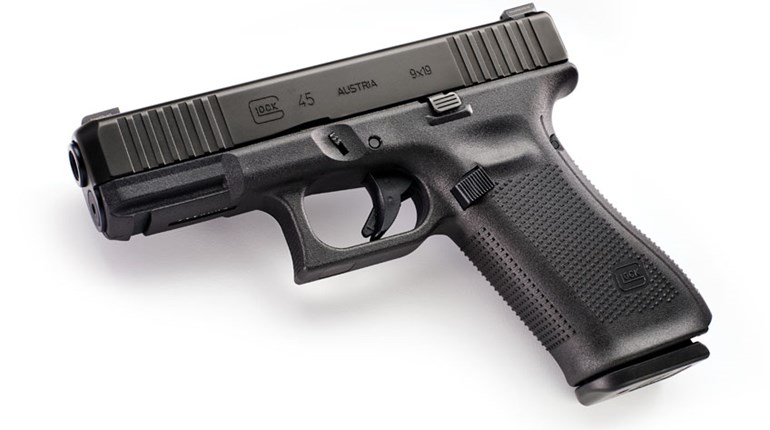
Home carry has been our topic over several weeks, mainly in response to the unwelcome recognition that we spend the most time there. There’s a logic that correspondingly suggests we’re more vulnerable as a result. It’s an unpleasant prospect: The very word “home” conjures all that is desirable and calming, especially in the sense of being secure.
No painstaking research, however, is required to point up the falseness of such an impression: 2015 saw 1.19 million violent crimes and 7.99 million property crimes (FBI numbers). It’s more challenging to suss out what percentage occurred at home, and may have put a law-abiding person in physical jeopardy or actually resulted in harm, but this is not encouraging (roughly three in 10 burglaries occur in occupied residences). Here, we’ll be truthful in a way the lefty media and gun-haters emphatically won’t be: An assault in your home is unlikely, but not, repeat not, impossibly so. It’s a disconcertingly large number however sliced and diced, and about which our otherwise superb police forces can do almost nothing in real time. Just ask them.
In other words, you will be on your own.
So despite the media’s balderdash claims that your chances of effectively defending yourself are “slim” and “none,” we’re looking beyond the challenges of having a firearm available (cached around the house or carried) in such a dangerous mischance. Our present considerations, in fact, have wide application even in the absence of a firearm.
In other words, you will be on your own.Whether you are inside or outside may seem the most straightforward of the variables, but even modest analysis shows that isn’t saying much. If you’re outside your home when someone uninvited or aggressive approaches, the best expedient is altogether obvious: Get inside as fast as possible and “zip up.” Account for and gather family members. If you have a “safe room” (sometimes called a “panic room”—an ugly and unhelpful metaphor), go there. And of course, call for help, but be rational about how quickly it can arrive. Including utterly necessary triage, four minutes would constitute superb response time, but twice to three times that is far more likely.
Note carefully where in this process you call for help: Not first.
If you’re indoors, the same rules apply: Secure, gather, call for help. Where in either of these circumstances you get to a firearm depends on the complexity of such a retrieval. It’s also why having it with you is still the best solution (compared to caching). It adds no time or complexity to a circumstance in which you can afford neither.
There are two other buckets into which scenarios fall, broadly speaking—“thorny” and “thornier.” Thorny is if you come home to find somebody in your house, and in practically all permutations the answer is the same even if it vastly rankles: Stay out, and call for authoritative help. “House clearing” is a complex skillset, and fraught with considerable peril (with or without a firearm). Your stuff simply isn’t worth all the downsides. Be the best witness you can—remember that smart phone camera?—and don’t seek, much less provoke, a confrontation. In many jurisdictions, you can actually get yourself in very hot water by pressing “castle” doctrine under these circumstances.
… home has a tendency to lull us out of the relaxed awareness we cultivate for outside-the-home carry.“Thornier” is the stuff of nightmare: Someone enters your home expecting it to be unoccupied, and instead discovers family members. The desire to protect is huge here, but all the risks compound on a massive scale if you arrive belatedly on such a scene. This has the potential to escalate rapidly, even to a hostage situation. Resolution without ghastly consequences will all but certainly require law enforcement intervention.
If there’s a ray of light here, it is in the extremely unlikely advent of this last scenario. Most interlopers are burglars on a tight timeline: 10 minutes or less, usually in daylight (still vaguely surprising, that), straight to the master bedroom, and always in search of high-portability, easily sold valuables. Occupied residences are therefore unappealing for a host of reasons that require no explanation.
We suggest that there are other threads that invite pulling here. Make sure, for instance, that your loved ones are in the loop on planning for these eventualities. Ideally, you’ll even practice them: Getting indoors quickly, and exiting too (make sure there are agreed-upon inside and outside “rally” points, and agree to abandon everything). With a spouse or older children, some “securing” tasks can be usefully parceled out, but remember that this should be done in twos except in dire need—never assume any assault is occurring along a single axis.
Next, and as we said in Part 1, home has a tendency to lull us out of the relaxed awareness we cultivate for outside-the-home carry. This inoffensive—but essentially bumbling and useless—state is Condition White, and it is an invitation to many disasters, not merely those of criminal genesis. Have fun and be relaxed, because that is what home is and ought to be for. But pay attention, too: Obvious alertness is a surprisingly powerful dissuader, to say nothing of a habit that becomes easier and even rewarding over time.
Not all the prep that supplements home carry should be left to the moment of a crisis.The last essential is straight out of our more prosaic notions of the Carry Life—act. Here, we talked about the concept of the OODA Loop, and “acting” is what the “A” stands for in the acronym. Oddly perhaps, this may be more important at home. Because “flight” options are decidedly finite at home, and “fight”—namely in the risk to loved ones or extremely proximate neighbors—is high, identifying any threat as early as possible is key. Herein lies some decisive if not exactly good news: With rare and typically uniformed exceptions, you’ll know the invited from the uninvited. If the uninvited press, even a little, that is most likely a threat. Act.
Not all the prep that supplements home carry should be left to the moment of a crisis. Indeed, it’s considerably preferable if such measures don’t, though they don’t erase the need for awareness, planning and wherewithal. What they can do is substantially reduce the likelihood you’ll need your active expedients: A dog or dogs; lights; cameras (real are better, but fake can work too); alarm signs; and outward opening, security rated “screen” doors all say the same thing—“Go elsewhere. Seriously.” As always, your goal should be to forestall a shooting situation, and keeping a criminal moving along is the next best thing to having him, her or them locked up.
Though we don’t see it often, there’s a stupid extreme that will be encountered every now and then, and we strenuously urge avoiding it: “This house/car/whatever protected by <<name of firearm>>” expostulations of any sort. Whether it’s a yard sign or bumper sticker of any size, such a display represents surrender to a thoroughly immature impulse and momentary amusement that may actually invite trouble of a real-life sort. Why advertise that you have something worth stealing? And after a legitimate defensive use of your home carry firearm, might not an aggressive prosecutor or judge seek to make an example and use this as proof of premeditation or predisposition to violent over-reaction? Not good—and enough said, we hope.
Now fire up the barbecue, enjoy the deserved pleasures of home and family, and Carry on.
Frank Winn has been studying arms and their relationship to tyranny, meaningful liberty and personal security all his adult life. He has been a firearms safety/shooting instructor for more than 20 years, and earned state, regional and national titles in several competitive disciplines.
































